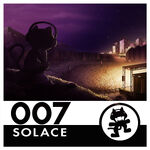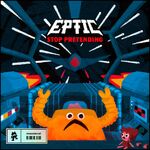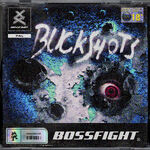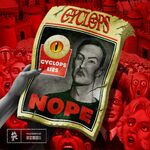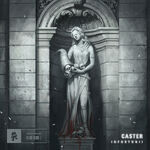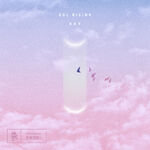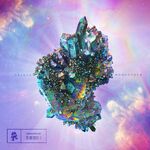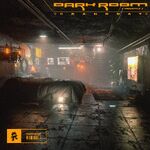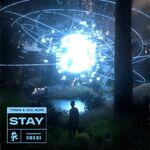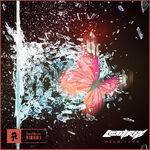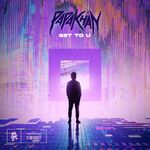Dubstep is a genre of electronic dance music that originated in South London, England. It emerged in the late 1990s as a development within a lineage of related styles such as 2-Step Garage, Breakbeat, Drum & Bass, Jungle, Dub and Reggae. In the UK, the origins of the genre can be traced back to the growth of the Jamaican sound system party scene in the early 1980s. The genre generally features syncopated drum and percussion patterns with bass lines that contain prominent sub bass frequencies, as well as shuffled or incorporating tuplets. The tempo is almost always in the range of 140–150 beats per minute, with a clap or snare usually inserted every third beat in a bar, providing the characteristic half-time "feel", essentially halving the tempo of the drums only, inducing the sentiment that the songs are slower than they actually are.[1]
One characteristic of certain strands of dubstep is the filter-modulated bass, often referred to as the "wub", where an extended bass note is manipulated rhythmically. This style of bass is typically produced by using a low-frequency oscillator to manipulate certain parameters of a synthesiser such as volume, distortion or filter cutoff. The resulting sound is a timbre that is punctuated by rhythmic variations in volume, filter cutoff, or distortion. This style of bass is a driving factor in some variations of dubstep, particularly at the more club-friendly end of the spectrum.[1]
The color associated with the genre before genre colors were phased out was: Purple (Hex: #8D04E1) (RGB: 141, 4, 225)
Subgenres
Tearout Dubstep
Tearout dubstep is an early style of dubstep with an emphasis on aggressive midrange sound wobbles. Its main features are more simplistic / minimalistic, with very distorted basses (similar to industrial) created from basic waveforms (such as the sawtooth, triangle, square or sine wave) through processes such as FM (Frequency Modulation) synthesis. It later evolved into Brostep.
Brostep
A subgenre of dubstep brought to popularity by the likes of Skrillex, Zomboy, Getter, Kill The Noise and Eptic which took off in the American scene and is still popular to this day. It features intricate, modulated basslines consisting of interlaced bass chains produced with characteristic, diverse, gritty, heavily processed "growl"-styled synths, possessing formant quality, created with active filtering motion. Emphasis is placed on a deep sub bass, a heavy, sharp transient / attack, halftime (one snare per bar) drums, snares that are usually designed with relatively long white noise / reverb tails, simple triad supersaw chords which may be used as fills. The subgenre has also been heavily influenced by dub reggae at its beginnings, borrowing "ragga"-styled vocals, as well as video game / chiptune music. Iconic elements such the Reso bass, formant basses and high pitched, screechy Crookers / Pressure Cooker FM-styled synths are often heard, and ample drop atmospheres are created with crowd chanting noises and background arpeggios, designed to fill space.
Briddim
A combination of Riddim and Brostep, taking the drop structures and sound design of riddim into a brostep context. It appeared around 2015, being popularized by the dubstep label Never Say Die.
Tearout
Tearout brostep, known simply as tearout, emerged from deathstep and uses many similar elements such as machine gun bass and screechy sound design. It is differentiated by a more "blown out" sound from heavily distorted bass and a chaotic feel with a faster and denser flow. It was popularized by artists such as Marauda and SVDDEN DEATH, and prominently featured on brostep record labels such as Never Say Die and its sublabel Black Label. It is unrelated to an older style of dubstep known as tearout dubstep.
Deathstep
Qualities of this genre include its very dark, ominous and evil atmosphere which is established through very heavy distortion / saturation and significant amounts of compression; this goal is also accomplished through the use of ample choral sections, off beat minor choral chords, wide, dark orchestral sections accompanied by frightful vocal samples. A renowned feature of this genre are the triplet, heavily percussive basslines that are usually not as intricate or diverse as in Brostep, supported by dissonant melodies. Very heavy drums are sometimes layered to confer them a metallic / odd harmonic resonance, and heavily processed growl fills are used, together with dark background elements. This subgenre is produced exclusively with a minor key in mind.
Liquid Dubstep / Chillstep
The polar opposite of Brostep, Liquid Dubstep is a lot more relaxed, calming, in its atmosphere, features liberal use of reverb and reverb fills. The subgenre takes a more minimalistic approach to its structures and places heavy emphasis on a deep sub bass layer, supported by wide, ethereal plucks and ample pads. This subgenre is envisioned as very atmospheric. Cinematic pulsing rhythms can be supported by orchestral, choral, vocal and acoustic layers to create a vast, euphoric soundscape. Filtered reese-styled basses can also be occasionally heard.
Melodic Dubstep
As the name would imply, the subgenre heavily places emphasis and relies on melodic structures, such as wide layered chords to create ample, powerful synth leads, and lighter sound design which can evoke more euphoric atmospheres. Melodic dubstep producers also frequently feature singers who usually deliver sentimental, passionate verses as to fit the drops. The subgenre can borrow sound design from Brostep. Tracks in this genre can evoke many emotions and featuring a wide variety of styles, such as dramatic and uplifting.
Neurostep
Originated from the fusion of Neurofunk and Dubstep, it features crunchy, distorted reeses derived directly from Neurofunk, intensely filtered, "sine compression" basses, a cold, robust, mechanical and dark atmosphere, science-fiction influenced soundscapes, very deep sound design, and cymbal patterns accompanying the heavy drums, which are occasionally very syncopated. Reverb and delay are often used in a psychedelic manner, and granular synthesis can play an important role in this subgenre.
Riddim
A more minimalistic subgenre founded on simple, repetitive, two-sided "seesaw" / "swing" rhythms formed usually from wide, sometimes percussive, detuned, metallic-styled basses, designed with the use of "reverb" filters, phasers / phaser filters, flanger filters and comb filters. It's very common for the snares on beat 3 to be replaced with a kick layered with a clap. Modern riddim has developed to intake influences from brostep, blurring the lines between the previously named genres and the fusion. The drum patterns are usually straight and feature little syncopation. It can feature a wide use of reverb, triplet bass patterns and off beat chants.
Color Bass
A subgenre of dubstep that sits between the supersaw-focused Melodic Dubstep and the heavier, more aggressive style of dubstep heard in Brostep or Riddim. Contrary to popular belief, Color Bass is less colorful than it is chippy. The name was coined by the producer Chime, who has been spearheading the rise of the subgenre in recent years alongside artists such as Ace Aura, Papa Khan and Sharks.
Future Riddim
Future Riddim is a form of Riddim pioneered by the producer Oolacile. In contrast to Riddim's harsh and atonal sounds, Future Riddim is has futuristic, melodic, and vibrant synth leads inspired by Future Bass and to a lesser extent Melodic Dubstep.
UK Dubstep
The original strain of Dubstep – As a descendant of 2-Step Garage and Dub Reggae, this subgenre features less of an emphasis on abrasiveness and aggressiveness than the Brostep of today, instead focusing on very deep atmospheres. This subgenre can feature more off-kilter, syncopated rhythms. Intricate, varied bass chains are not the focus of this subgenre.


